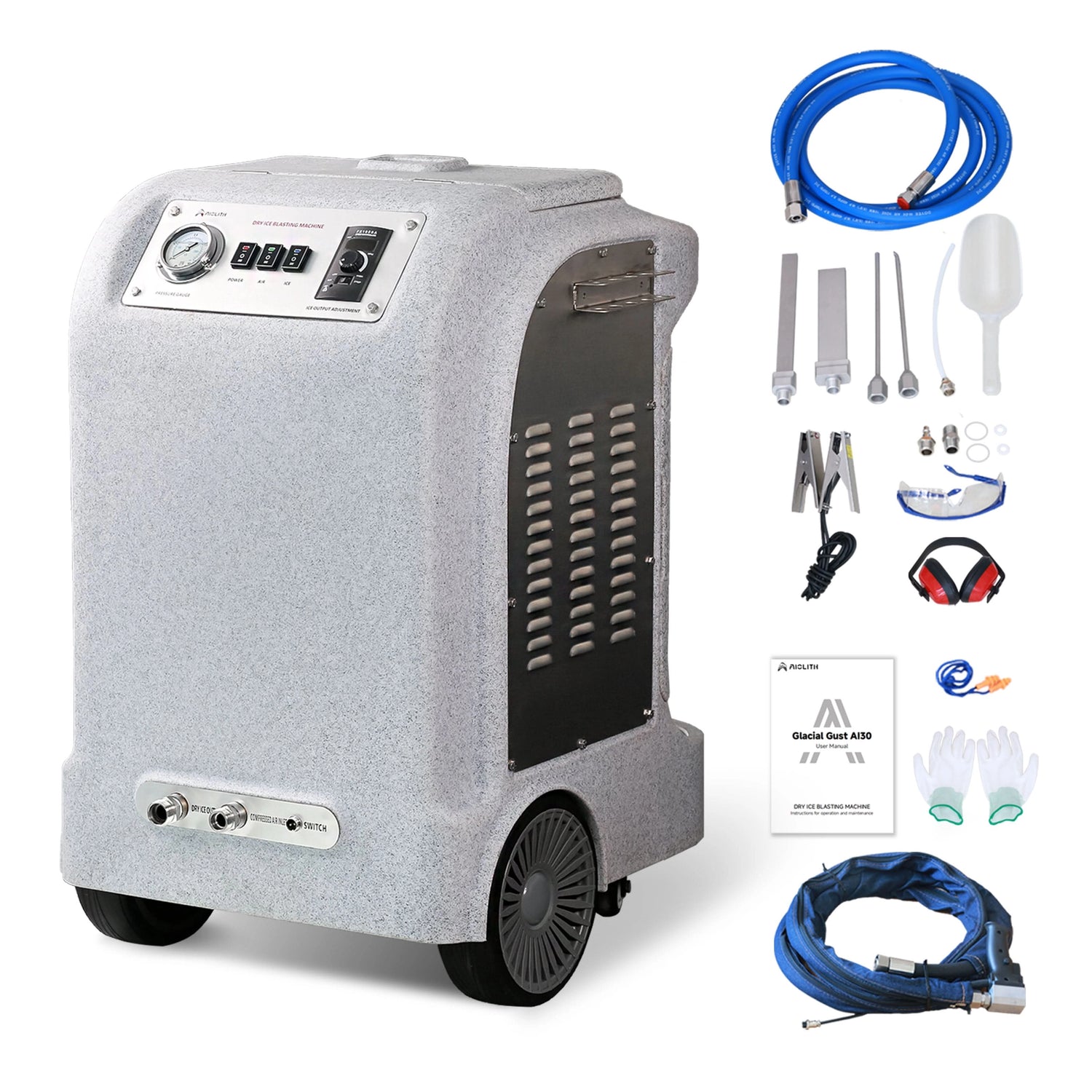Self Propelled Floor Scrubber | Benefits, Features & Buying Guide
Share
Discover the benefits of a self propelled floor scrubber. Learn how it works, key features, and buying tips to keep your floors spotless and safe.
When it comes to keeping large areas clean, traditional mopping just doesn’t cut it anymore. For businesses, schools, hospitals, and warehouses, investing in a self-propelled floor scrubber can save time, reduce labor costs, and ensure spotless floors. Unlike walk-behind manual models, these machines help propel themselves forward, reducing operator fatigue and boosting efficiency.
In this guide, we’ll explore everything you need to know about self-propelled floor scrubbers: how they work, their advantages, must-have features, and tips for choosing the right one.
What is a Self-Propelled Floor Scrubber?
A self-propelled floor scrubber is a cleaning machine designed to scrub, wash, and dry floors in a single pass. Unlike manual or pad-assist models, it uses a motorized drive system to move forward, requiring minimal effort from the operator.
Think of it like the difference between pushing a heavy shopping cart uphill versus one with power assist—one feels like a workout, the other feels effortless.
Key Benefits of a Self-Propelled Floor Scrubber
- Reduced Operator Fatigue: The motorized drive does the hard work.
- Faster Cleaning: Cleans larger spaces quickly and consistently.
- Safer Floors: Scrubs and dries simultaneously, leaving no wet spots.
- Better Hygiene: Rotary brushes remove dirt, grime, and bacteria more effectively.
- Cost-Effective: Saves labor time and reduces water/chemical use.
Essential Features to Look For
- Working Width: Determines how much area it can cover in one pass.
- Tank Capacity: Larger solution and recovery tanks reduce refill stops.
- Battery vs. Corded: Battery-powered models offer mobility; corded ones run indefinitely.
- Brush Pressure & RPM: Higher pressure and speed improve cleaning performance.
- Noise Level: Quieter machines are better for hospitals or schools.
Self Propelled vs. Walk-Behind Floor Scrubbers
| Feature | Walk-Behind | Self Propelled |
|---|---|---|
| Effort Required | Higher | Minimal |
| Speed & Coverage | Moderate | High |
| Ideal for Small Areas | Yes | Limited |
| Best for Large Facilities | No | Yes |
If your facility is small, a walk-behind may suffice. But for medium to large spaces, a self propelled model saves time and energy.
Maintenance Tips for Longevity
To maximize your machine’s life:
- Empty and rinse tanks daily.
- Clean and inspect brushes regularly.
- Charge batteries fully after each use.
- Store in a dry, safe location.
- Follow manufacturer’s maintenance schedule.
Buying Guide: How to Choose the Right Model
- Assess Your Facility Size – Bigger areas need larger working width and tank capacity.
- Consider Surface Type – Different brushes suit concrete, tiles, or vinyl.
- Set a Budget – Balance upfront costs with long-term savings.
- Check After-Sales Support – Ensure parts and servicing are easily available.
- Think About Noise Levels – Especially if cleaning happens during working hours.
Comparison Guide: Top-Rated Self-Propelled Floor Scrubbers
When choosing the best self-propelled floor scrubber, it’s important to compare models side by side. Each one has strengths suited for different environments. Below are some popular options to consider:
Tennant T500
- Working Width: 28"
- Solution/Recovery Tank: 22 gal / 27 gal
- Battery Type: 36V battery system
- Run Time: Up to 5 hours
- Best For: Warehouses, airports, and other large spaces requiring high durability.
Nilfisk SC500
- Working Width: 20"
- Solution/Recovery Tank: 12 gal / 12.5 gal
- Battery Type: 24V maintenance-free battery
- Run Time: 4.5–5 hours
- Best For: Schools, hospitals, and offices with its eco-friendly cleaning modes.
Aiolith AF2217
- Working Width: 22"
- Solution/Recovery Tank: 16 gal / 17 gal
- Battery Type: 24V/100AH lithium battery
- Run Time: 5 hours
- Best For: Medium-to-large facilities needing strong scrubbing power on a budget.
Quick Comparison Table
| Model | Working Width | Tank Capacity (Gal) | Battery Type | Run Time | Best For |
|---|---|---|---|---|---|
| Tennant T500 | 28" | 22 / 27 | 36V | 5 hrs | Large facilities |
| Nilfisk SC500 | 20" | 12 / 12.5 | 24V | 5 hrs | Schools & hospitals |
| Aiolith AF2217 | 22" | 16 / 17 | 24V lithium | 5 hrs | Cost-effective option |
Conclusion
A self-propelled floor scrubber is more than just a cleaning tool—it’s an investment in efficiency, safety, and hygiene. By reducing operator effort, covering large areas quickly, and delivering spotless results, it’s a must-have for modern facilities. Whether you manage a school, hospital, warehouse, or shopping center, the right scrubber can transform your cleaning process and save money in the long run.
FAQs
1. What’s the main advantage of a self-propelled floor scrubber?
It reduces operator fatigue and speeds up the cleaning process.
2. Can self-propelled scrubbers clean all floor types?
Yes, with the right brush or pad, they work on concrete, tile, vinyl, and more.
3. How long does the battery last?
Most models run 4–6 hours per charge, depending on usage.
4. Are they noisy?
No, many models operate at 65–70 dB, similar to a normal conversation.
5. Are they worth the investment?
Absolutely. They save time, reduce labor costs, and extend floor life.

